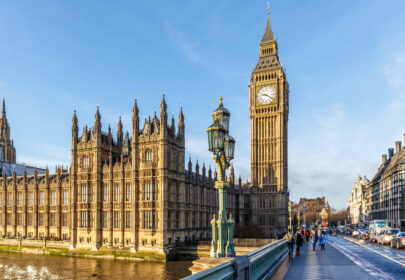Blog
Getting on top of Capital Gains Tax

At a glance
- If you sell or dispose of an asset that’s gone up in value, you may pay Capital Gains Tax (CGT) on the profit, or gain.
- Up until the end of the 2023/24 tax year, the first £6,000 of your capital gain is tax-free, but you may pay CGT above that threshold.
- The CGT exemption is reducing significantly again for the 2024/25 tax year to just £3,000. So it’s worth knowing that, as well as making the most of your tax-free allowance of £6,000 you can also bring your CGT bill down in other ways – such as gifting assets to your partner or increasing your pension contributions.
Capital Gains Tax (CGT) can trip many of us up. It’s a tax on the profit, or ‘gain’ that you make when you sell or even gift an asset that’s increased in value.
It’s a complicated area of tax-planning. Some people pay who could have mitigated some or all of the tax, while others forget to declare their gains, and may even face fines.
Which is why it’s wise to get your head around CGT and take financial advice, so you don’t end up paying more than you need to.
These are some of the most common questions we’re asked about CGT, plus some practical tips on how it works, and how to pay the right amount at the right time.
What is Capital Gains Tax?
CGT is a tax on the profit or gain that you’ve made while you’ve owned the asset. It’s not a tax on the total sale price itself.
So, if you bought some shares for £10,000 and sold them for £15,000, your capital gain or profit is £5,000. That’s the amount assessed for CGT.
Should I be paying Capital Gains Tax?
Almost any personal possession can be subject to CGT, from shares and investments to buy-to-let properties, second homes, jewellery and antiques.
Some items are exempt from CGT, including:
• Shares or investments held within a pension or an ISA – these are free of Capital Gains Tax
• Your primary home
• Your car
• Assets you give to charity
Is there a tax-free allowance for CGT?
Until the end of the 2023/24 tax year, the first £6,000 you gain is tax-free – this is sometimes called your annual exempt amount. From April 2024, however, this allowance will drop to £3,000.
How much CGT will I have to pay?
This depends on your income, and your marginal tax rate.
If you pay the basic rate of tax and the gains you’ve made are still within the basic-rate band, you’ll pay 10% CGT. Unless you’re selling residential property, in which case the rate rises to 18%.
If you’re a higher or additional-rate taxpayer, or your gains combined with your income bring you into the higher rate, you’ll pay 20% for most assets and 28% on gains made by the sale of residential property.
How do I declare capital gains?
When you sell assets and have made gains of more than £6,000 (2023/24), you must declare it to HMRC.
How and when you do this depends on the asset or assets you’ve sold.
If you sell a property and it completed after 27 October 2021, you have just 60 days to report your gain and pay the tax due.
To do this, you’ll need to set up a Capital Gains Tax on Property account on the government website.
If you made a gain selling or giving away other assets, you can report and pay the tax straight away using the real-time service on the government website. Or you can report it in a self-assessment tax return in the tax year after you sold the assets.
HMRC works out how much CGT you owe, how to pay it and when the deadline is.
How can I cut my CGT bill?
You’ve got a number of options if you want to reduce the amount of CGT that you pay. It will however, be highly dependent on your personal circumstances, and you may need to manage the reduction over time – which is why expert financial advice is very important when it comes to CGT.
You can gift assets to your spouse or partner
Most transfers of capital between spouses or civil partners are free from CGT. By transferring assets to them, you’ll be able to use both of your annual allowances – making the first £12,000 of the gain tax-free. But only until 5 April 2024. In 2024/25, that amount would be £3,000 if you utilise both allowances.
You can increase your pension contributions
The amount of CGT you pay is linked to your rate of Income Tax. So if you pay more into your pension, you’ll be reducing your taxable income – which may extend your basic rate tax band, and thus the rate of CGT that you’re charged.
You can make full use your annual allowance
With CGT, you can’t carry forward any unused allowance from the previous year. But if you sell your assets gradually over a number of years, instead of all at once, you can keep the gains just within the annual allowance and avoid a CGT bill.
You can maintain or improve your assets
If you make improvements to a holiday home, or conserve a valuable painting, you can write off those costs against tax.
I’ve heard about ‘Bed and ISA’. What does that mean?
‘Bed and ISA’ means selling up some investments and buying them back within a tax-efficient ISA wrapper. ‘Bed and ISAs’ are like ‘double-deals’, allowing you to sell existing investments and use the proceeds to open or top up an ISA account. You can then buy the same investments back, choose other investments or simply keep the cash in your ISA.
This is a win-win. It means you can use up your ISA allowance and protect yourself from CGT. It can also be a practical, tax-efficient option if you need to sell gains up to the CGT annual allowance, but you’re not ready to sell the whole investment.
What if I make a loss on an asset?
Of course, assets don’t always go up in value.
If you make a profit when selling one item, but a loss when selling another, you can deduct the loss from your gain when calculating how much CGT overall you need to pay. You can also carry forward any losses that haven’t been used to offset gains, but you must report the losses within four years.
Even if you don’t owe any CGT, it’s still a good idea to declare any losses on your tax return. This will make it less of a headache if you want to offset gains against them in future years.
How can i work out CGT if I sell my business?
If you’re a sole trader or business partner and you’ve owned the business for at least two years, you may qualify for Business Asset Disposal Relief, which used to be known as Entrepreneurs’ Relief. This brings the rate of CGT on disposals of certain business assets down from 20% to 10%.
CGT may sound complicated but, as with most aspects of tax-planning, taking good advice ahead of tax-year end on 5 April means you can feel confident about your decisions, and comfortably in control of your financial affairs.
Need help getting your head around CGT, and whether it applies to you? Just get in touch with us and talk it through.
The value of an investment with St. James’s Place will be directly linked to the performance of the funds you select, and the value can therefore go down as well as up. You may get back less than you invested.
The levels and bases of taxation, and reliefs from taxation, can change at any time and are generally dependent on individual circumstances.
SJP Approved 31/01/2024
Tea or Coffee?
Why not get in touch to discuss your requirements? We understand that life is busy, that's why we're happy to meet in person or virtually. Let's start to plan your future together.















































































































